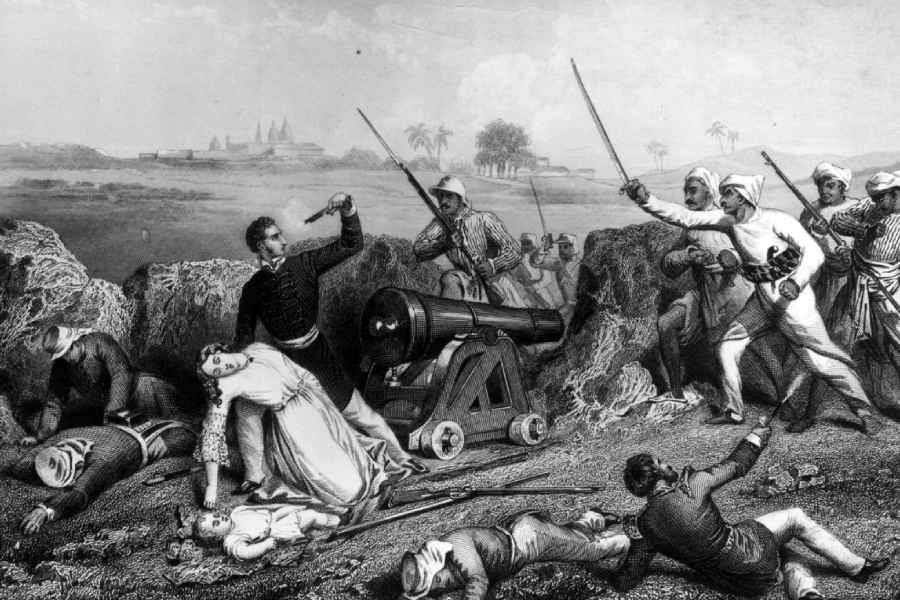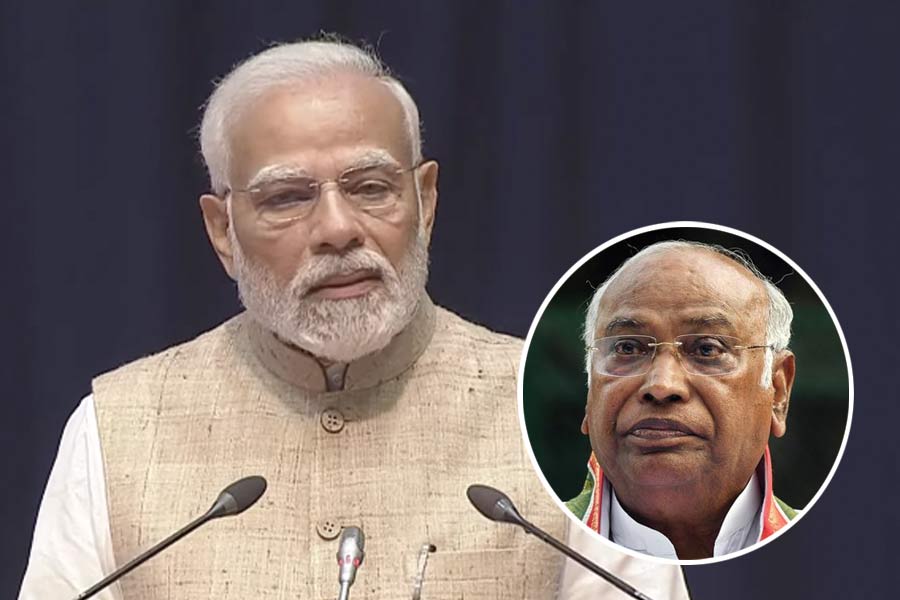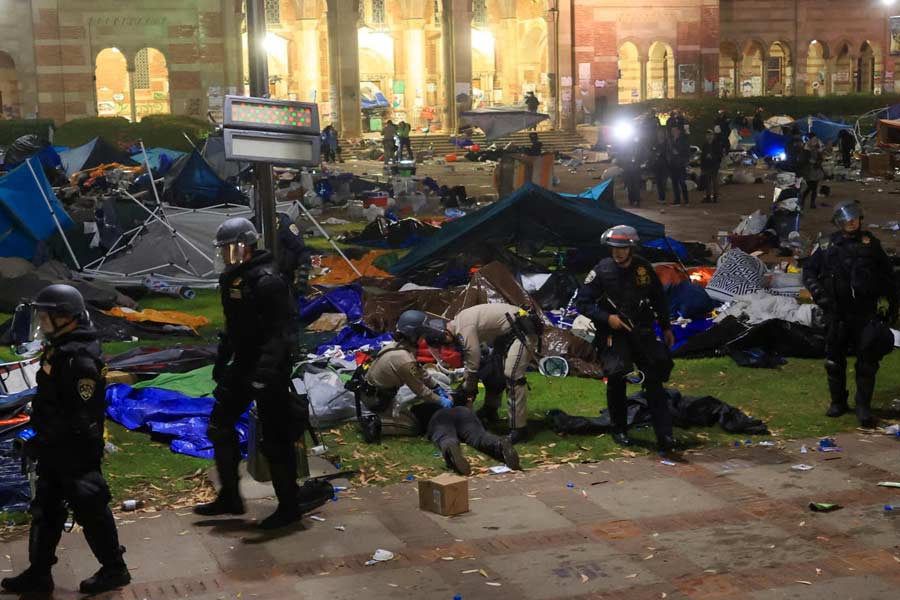Two contending ideas are at war over the fate of the world’s largest population. One is Hindutva, a creed of empowerment of the Hindus in their sacred land. The other may be called Hindiyat, an aspiration to live together in a free federation. The contest between the National Democratic Alliance and the INDIA groups is taking place, like the Bharata War, on an all-India scale and the question is being asked, once again: which side stands for dharma and who is guilty of adharma?
To arrive at an answer, three tests may be done: Gandhiji’s test on himsa and ahimsa, B.R. Ambedkar’s test of inclusion and exclusion, and a historical question on how ‘the Indians’ have been perceived in the past, and where does each side stand on ‘unity in diversity as the accepted India’?
In Gandhi’s eyes, himsa is the greatest of sins (adharma). The pogrom against the Muslims in Gujarat in 2002 would have reminded him of the pogrom against the Hindus in Noakhali he handled in 1946-47. The murder of missionaries would have to be regarded as adharma too.
The Constitution of India, drafted by Ambedkar, confers on the citizens freedom of person and equality in the eye of the law. This is a social vision opposed by the profoundly hierarchical Hindu rashtra of the Rashtriya Swayamsevak Sangh. The Christians and the Muslims are excluded from this Hindu nation. INDIA, which is committed to the Constitution, passes Ambedkar’s test by inclusion of the word, ‘Inclusive’, in its name (Indian National Developmental Inclusive Alliance).
The historical test requires us to probe the civilisation of India and its diversity in unity. INDIA has deep roots in our past. The RSS is a modern political organisation, which has but a tenuous link with the rich variety of our civilisation. Its Hindutva is principally a present-day Hindu reaction to globalising cosmopolitanism.
Mohan Bhagwat, the RSS chief, denies discrimination against minorities under Hindu rule. He argues that all inhabitants of India are called Hindu. The Muslim conquerors did, indeed, call their new subjects ‘Hindu’, but as there sprang up a Muslim population, they renamed all Indians as ‘Hindi’ (“Hindi hain hum” — Iqbal). Why not designate Indians as Hindi or Hindwi? Is it not because Bhagwat means Hindu, exclusively Hindu? The Muslim origin of the name is forgotten. A ruling Hindu majority is what he is after.
The Hindus had no name for themselves at the advent of Islam. When they wanted to refer to themselves collectively, the caste-based community named the four varnas together. The community was hammered into an identifiable group only after the Muslim conquest.
In the fifteenth century, the Vijaynagar and the Rajput kings began to refer to themselves as ‘Hindu Raya’ and ‘Sura-Trana’ (Sultan), introducing a new Hindu identity among their subjects in imitation of the Muslim sovereigns.
Out of this past, the poet, Rabindranath Tagore, expected that Indian humanity could “give and take”, “mingle and merge”, and no one could be turned back. A composite civilisation had evolved, displaying amazing variety in commonality. The poet was also appreciative of the universal values of “reason and justice” then taking shape with the coming of Western rulers.
The English-educated elite of the colonial port cities had a liberal mindset. Indian nationalism, initially based on this class, was in consequence a composite, secular nationalism. The Indian National Congress was a broad alliance of all the communities belonging to the educated professional class of Bombay, Calcutta, Madras and the other towns where Western values had struck roots.
Earlier, the sepoys had fought for their religion in 1857 with an alternative vision of attachment to the country but with a difference. They fought for the sake of the ‘two religions’ — ‘Deen’ and Dharam’ — claiming to represent the Hindus and the Musalmans of Hindustan (Humud wa Muslimeen-e-Hind). The RSS has no connection with the political tradition of either 1857 or 1885.
Before he became a Hindutva progenitor, V.D. Savarkar, a leader of the revolutionaries, had been at one time an admirer of the Sepoy War and the Hindu-Muslim unity of 1857. Surprisingly, Hindutva has no roots in the swaraj and the swadharma he praised in his banned work on India’s First War of Independence. The simultaneous unfurling of the green flag of the Muslims and the white flag of the Hindus is now anathema to the RSS. The cry, ‘Hindu Muslim ek’, ‘Shree Krishna Allah ek’, rings no bell with the kar sevaks who have raised the Ram Janmabhoomi temple over the demolished Babri masjid. The single saffron flag of 1992 has displaced the green and white flags of 1857. The kar sevaks are the natural opponents of the secular, liberal idea of India. Pertinently, the later Veer Savarkar and the RSS he inspired took no part in the struggle for Independence.
The Hindutva idea of India is an external growth on the body politic which sprang up sui generis out of a struggle for power in the late colonial and independent India. The RSS is motivated by one overriding objective — capturing the Indian State. A majoritarian Hindu rashtra is to replace the democratic, secular republic set up under the Constitution. The instrument for realising this objective is crowd mobilisation and popular violence. The Hindu prince (Raya) and the Muslim noble (Hammira) had fought frequent wars in the past, but there was nothing like today’s calculated mass pogroms.
INDIA can plausibly lay a claim to the composite nationalism of a continuing past. The vernacular culture of the non-Hindi states threatened by the domination of ‘Hindi, Hindu, Hindustan’ is another political space for the Opposition to try and occupy.
The principal difficulty lies in the fragility of the new coalition. Furthermore, the demographic weight of the overpopulated Hindi heartland (Hindustan) favours the sangh parivar at present. The same factor had earlier fuelled the transition from the supremacy of the liberal, Westernised elite to the empowerment of the resentful Hindi-speaking sub-elite.
The RSS does not hurry but does not relent in the implementation of its programme. The earlier A.B. Vajpayee regime might not have stopped the massacre of the Muslims in Gujarat but it did not conspire against the Constitution of India. The Narendra Modi regime is doing so piecemeal, a clever device that outwardly preserves legal forms. The country is under an undeclared, deceitful Emergency. Hindutva threatens the liberty of every citizen of India and the lives of the minorities all the way from the coast of Gujarat to the hills of Manipur.
This is an edited version of the Kuruvila Zachariah Memorial Lecture delivered by Rajat Kanta Ray at Presidency University, 2023










